
Below is a video overview of our Self ordering kiosk for restaurants, please watch it carefully to learn more!
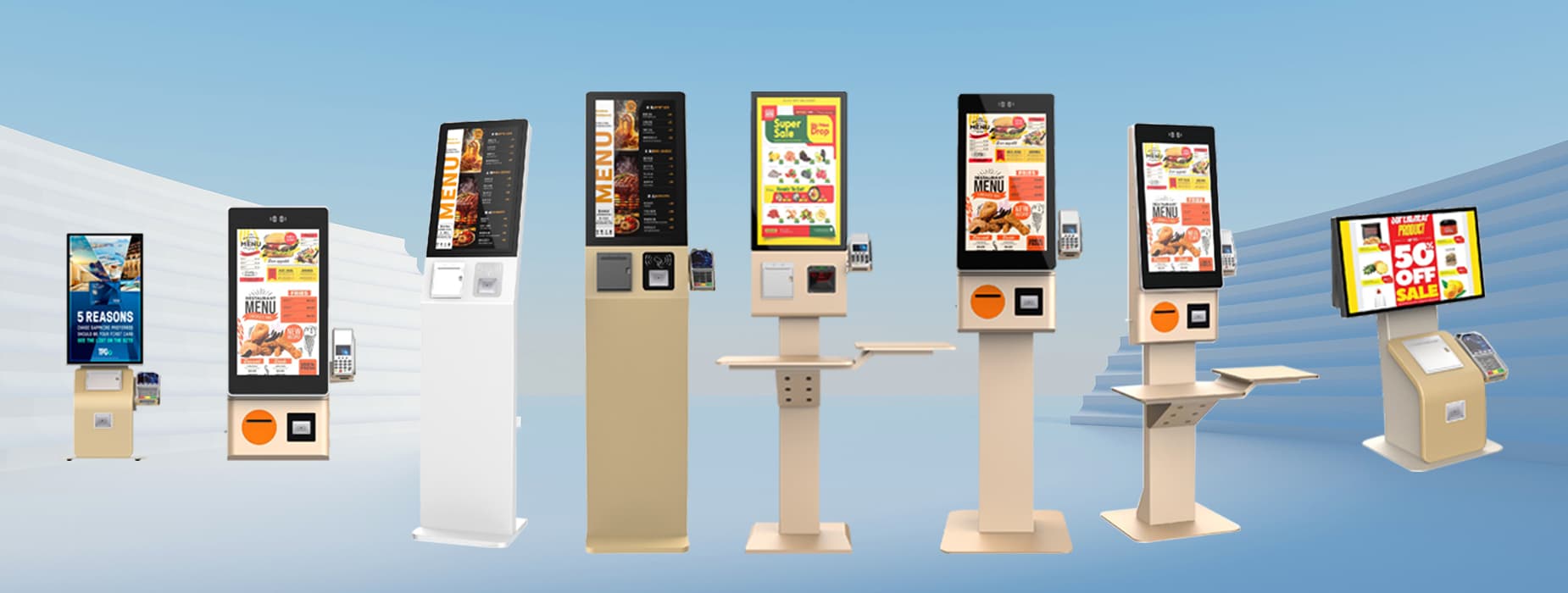
Discover the unique advantages of our self ordering kiosk for restaurants by watching the video above. You'll see how our intuitive touchscreen interface, customizable menus, and seamless payment options enhance the customer experience. These features reduce wait times and improve order accuracy, making service more efficient. Don't miss out on transforming your restaurant operations—place your order today and elevate your service quality!
| Component | Specifications | Process Step |
|---|---|---|
| Touchscreen Display | 32-inch LCD/LED, HD resolution (1920x1080), multi-touch (up to 10 points) support | 1. Select and source the display model. |
| Kiosk Enclosure | Durable steel/aluminum frame, weather-resistant (IP65 rating) | 2. Cut and shape the enclosure materials. |
| Payment Terminal | Supports credit/debit cards, NFC, QR codes, EMV compliant | 3. Integrate payment hardware into kiosk. |
| Printer | Thermal printer for receipts, speed (up to 200mm/s), compact size (e.g., 80mm width) | 4. Install printer and connect to software. |
| Computer Unit | Mini PC or embedded system, RAM (4GB/8GB), Storage (128GB/256GB SSD) | 5. Assemble computer components in kiosk. |
| Software System | Customizable UI, order management, reporting tools, compatibility with iOS/Android | 6. Install and configure software solutions. |
| Network Connectivity | Wi-Fi (802.11ac), Ethernet (10/100/1000 Mbps options) | 7. Ensure reliable network integration. |
| Speaker/Audio System | Built-in speaker (2W/5W), audio prompts capability | 8. Install audio components. |
| Cooling System | Fans (12V, up to 80mm) or heat sinks to manage temperature | 9. Integrate cooling solutions if needed. |
| Safety Features | Surge protection (varied voltage ratings), lockable enclosure | 10. Implement safety features in design. |
Self ordering kiosk for restaurants offer a seamless and modern ordering experience. The hardware typically features high-resolution touch screens, ensuring clear visuals for menu items. Built-in printers allow for quick receipt generation, while secure payment terminals support various transaction methods, including credit cards and mobile payments. The kiosks are designed for durability, often with weather-resistant materials for outdoor use.
On the software side, the systems provide an intuitive interface, enabling customers to browse menus, customize orders, and receive real-time updates on pricing and suggested dishes. The software is designed to integrate smoothly with existing POS systems, facilitating efficient order processing and inventory management. Furthermore, these kiosks can support multiple languages, catering to diverse customer bases. Overall, self-ordering kiosks enhance customer satisfaction and streamline restaurant operations, making them an essential tool in the modern dining environment.

Self ordering kiosk for restaurants streamline the ordering process, allowing customers to place orders independently. Here’s how they work:
User Interface: Customers approach the kiosk and interact with a high-resolution touch screen, which displays the menu clearly.
Menu Navigation: Users can browse through different categories, view images, and read descriptions of menu items.
Customization: Customers can customize their orders (e.g., add toppings or special instructions) before finalizing them.
Order Confirmation: Once the selection is made, the kiosk displays a summary for the customer to review and confirm their order.
Payment Processing: After confirmation, customers can pay using various methods, such as credit cards, mobile wallets, or cash.
Receipt Generation: The kiosk prints a receipt with the order details, which customers can use to pick up their orders.
Order Transmission: The system sends the order directly to the kitchen or POS system, ensuring timely preparation.
Order Notifications: Customers may receive notifications on when their order is ready for pickup.
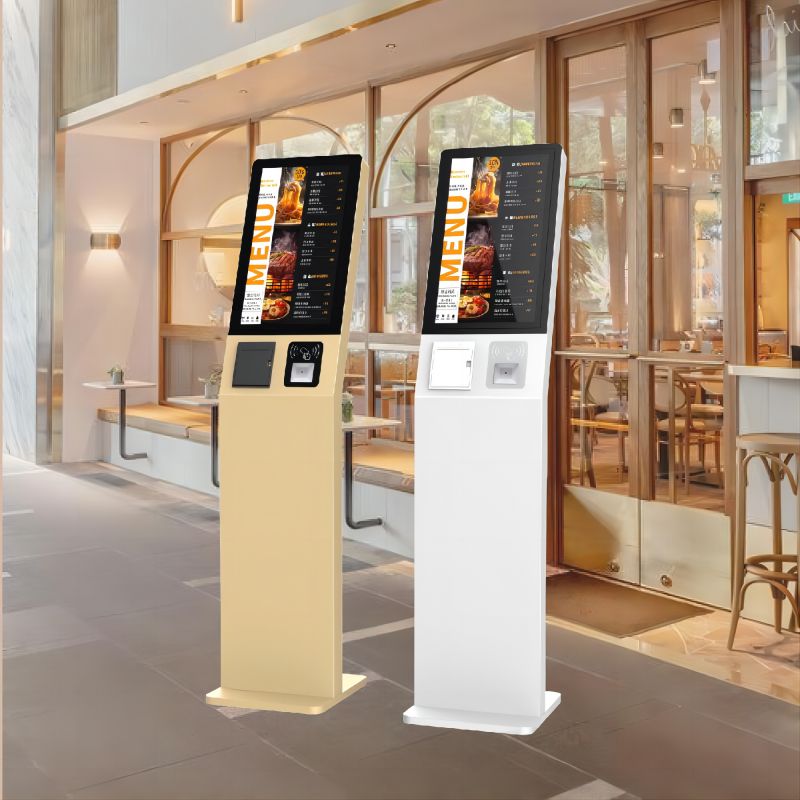
Approach the Kiosk: Stand in front of the kiosk and ensure it’s powered on.
Start Your Order: Tap the screen to begin. You’ll see the main menu displayed.
Browse the Menu: Navigate through categories (e.g., appetizers, main courses, desserts) by tapping the corresponding buttons.
Select Items: Tap on a menu item to view details. You can often see images, descriptions, and prices.
Customize Your Order: If applicable, choose options like size, toppings, or special instructions. Confirm your choices by tapping "Add to Order."
Review Your Order: After selecting all items, tap on the cart icon to view your order summary. Make any necessary adjustments.
Proceed to Payment: When satisfied with your order, select the "Checkout" option.
Choose Payment Method: Follow on-screen instructions to pay via credit card, mobile wallet, or cash.
Receive Your Receipt: After payment, a receipt will be printed. Keep it for pickup.
Order Notification: Wait for notifications or check the display for your order status.
Pick Up Your Order: Go to the designated area when your order is ready, showing your receipt if required.
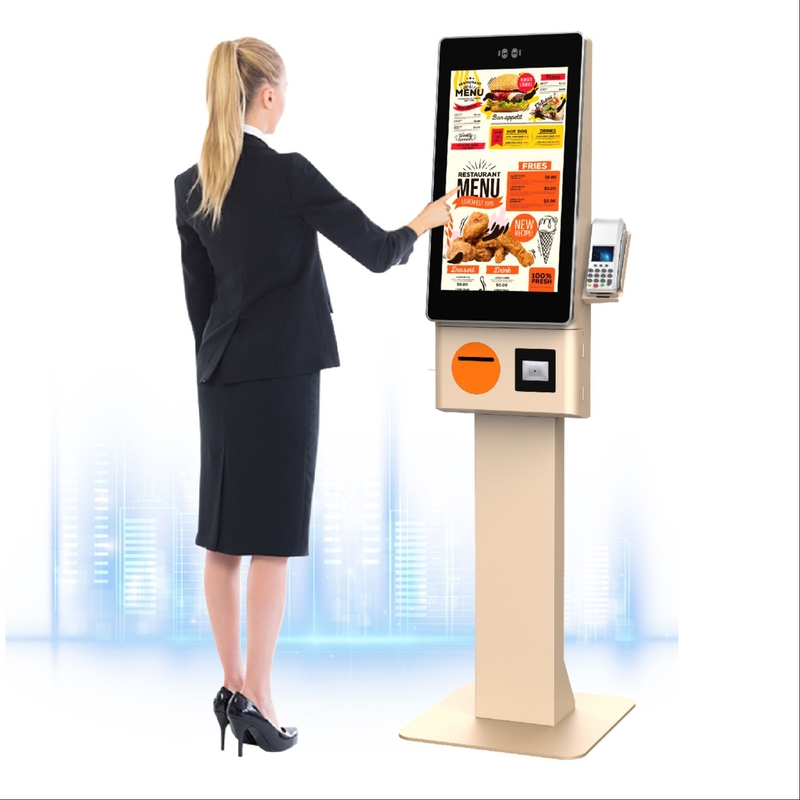
User-Friendly Interface: Intuitive touch screens with clear navigation make it easy for customers to browse menus and place orders.
Customizable Orders: Customers can personalize their meals by selecting options like toppings, sides, and portion sizes.
Visual Menu Display: High-resolution images and detailed descriptions help customers make informed choices.
Multi-Language Support: Kiosks often support multiple languages to accommodate diverse customer bases.
Payment Flexibility: Various payment options, including credit/debit cards, mobile wallets, and cash, enhance convenience.
Order Confirmation: Customers receive a summary of their order before finalizing, reducing errors.
Real-Time Updates: Displays can show estimated wait times and order statuses, keeping customers informed.
Integration with POS Systems: Seamless connection with existing POS systems ensures efficient order processing and inventory management.
Receipts and Notifications: Kiosks generate printed receipts and may provide digital notifications for order readiness.
Accessibility Features: Many kiosks include options for customers with disabilities, such as voice guidance and adjustable height.
Durability and Security: Designed for high-traffic environments, these kiosks are built to withstand wear and include security features to protect customer data.
Data Analytics: Kiosks can collect valuable data on customer preferences and ordering patterns, aiding in inventory and marketing strategies.
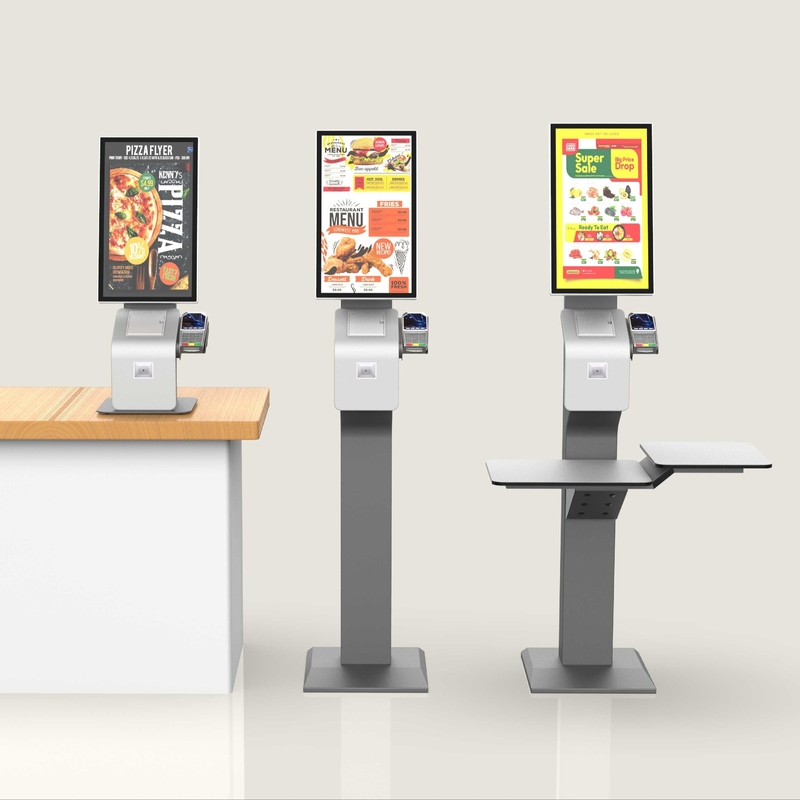
Fast Casual Dining: Allowing customers to place orders quickly, reducing wait times during peak hours.
Quick Service Restaurants (QSRs): Streamlining the ordering process for takeout and drive-thru services, enhancing efficiency.
Buffets: Enabling guests to order specific dishes from the menu rather than relying solely on buffet offerings.
Coffee Shops: Facilitating beverage customization and order placements, reducing queues during busy times.
Food Trucks: Providing an easy ordering solution for customers, especially in outdoor settings with limited staff.
Cafeterias: Helping customers navigate large menus and place orders efficiently in school or corporate dining facilities.
Event Catering: Streamlining food ordering for large events or conferences, allowing attendees to choose meals in advance.
Hybrid Dining Models: Supporting both dine-in and takeout orders, accommodating various customer preferences and enhancing operational flexibility.
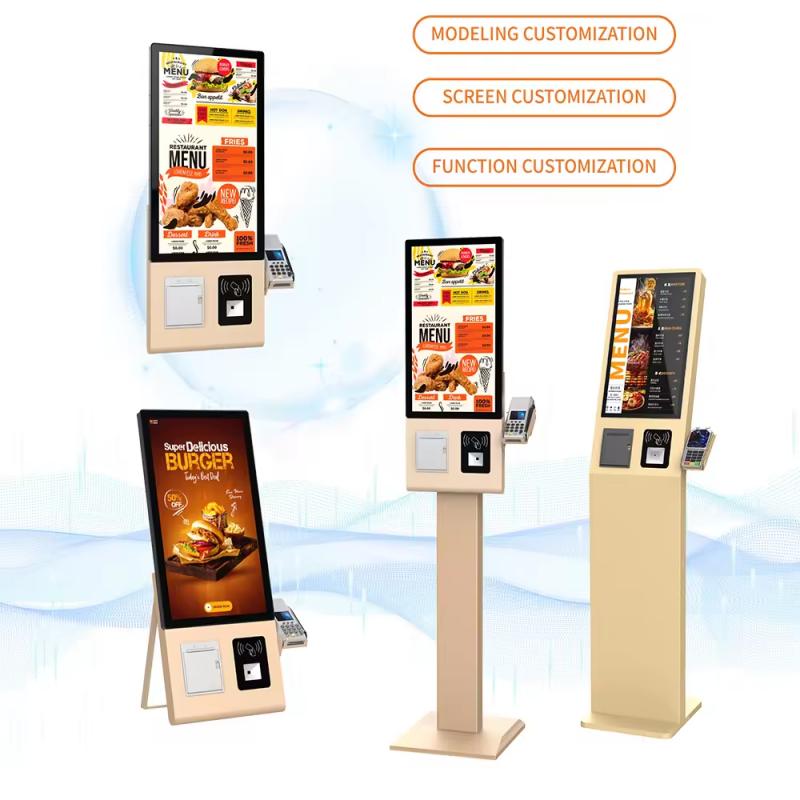
Increased Efficiency: Speeds up the ordering process, reducing wait times for customers and improving table turnover.
Enhanced Customer Experience: Provides a user-friendly interface that allows customers to explore menu options at their own pace.
Reduced Labor Costs: Minimizes the need for staff during peak hours, allowing them to focus on food preparation and customer service.
Order Accuracy: Reduces human error in order taking, ensuring customers receive exactly what they requested.
Data Collection: Gathers valuable insights on customer preferences and ordering patterns, aiding in marketing and inventory management.
24/7 Availability: Kiosks can be used during all operating hours, allowing for continuous order placement without requiring staff.
Space Efficiency: Compact design can fit into various layouts, optimizing the restaurant's floor space.

Menu Personalization: Ability to customize items with different toppings, sizes, and side options.
Branding: Kiosk design can be tailored to reflect the restaurant's branding, colors, and logo.
User Interface: Customizable layouts and graphics to enhance the customer experience and align with the restaurant's theme.
Language Options: Multiple language selections to cater to a diverse clientele.
Payment Methods: Options for integrating various payment methods, including digital wallets and loyalty programs.
Promotions and Upselling: Ability to display targeted promotions, upsell items, and suggest add-ons based on customer selections.
Accessibility Features: Customizable settings for users with disabilities, such as voice commands and adjustable screen height.
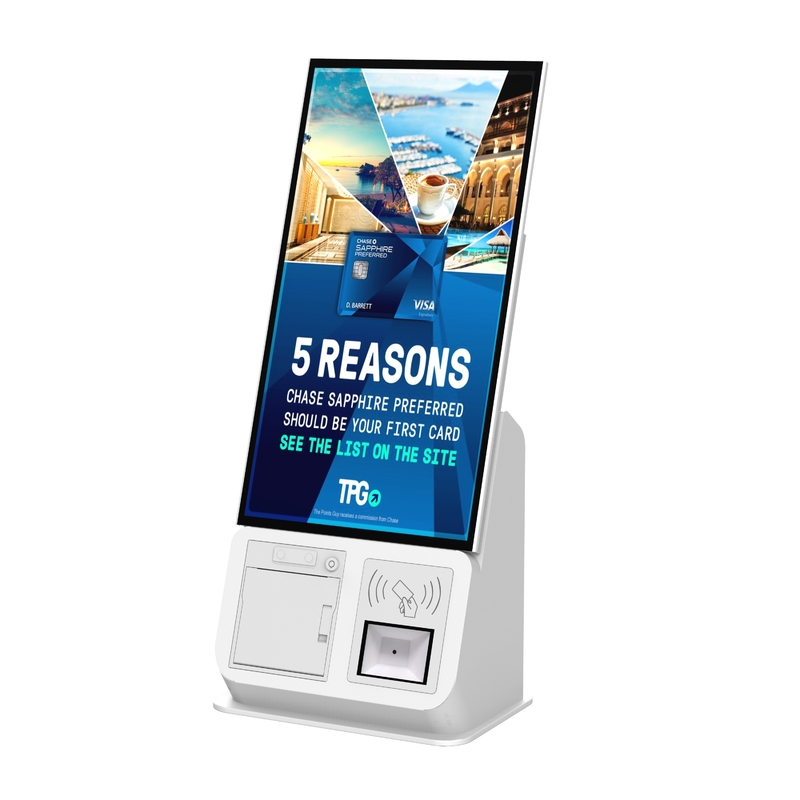
Cost Factors and Price Range of Self Ordering Kiosk for restaurants
| Cost Factor | Description | Price Range |
|---|---|---|
| Kiosk Hardware | Touch screen, printer, payment terminal | $2,000 - $7,000 |
| Software Licensing | Initial and ongoing fees for software support | $500 - $2,000 per year |
| Installation | Setup and configuration costs | $300 - $1,500 |
| Maintenance | Regular upkeep and technical support | $100 - $500 per year |
| Customization | Design and feature modifications | $500 - $3,000 |
| Training | Staff training for operation and troubleshooting | $200 - $1,000 |
| Shipping Costs | Delivery and handling fees | $100 - $500 |
The return on investment (ROI) for self ordering kiosk for restaurants can be significant. By reducing wait times and improving order accuracy, restaurants can enhance customer satisfaction, leading to increased sales and repeat business. Additionally, kiosks can help lower labor costs by minimizing the need for staff during busy hours. Many establishments report recovering their initial investment within 12 to 18 months due to higher throughput and efficiency. Moreover, the ability to gather data on customer preferences allows for targeted marketing, further boosting revenue potential.
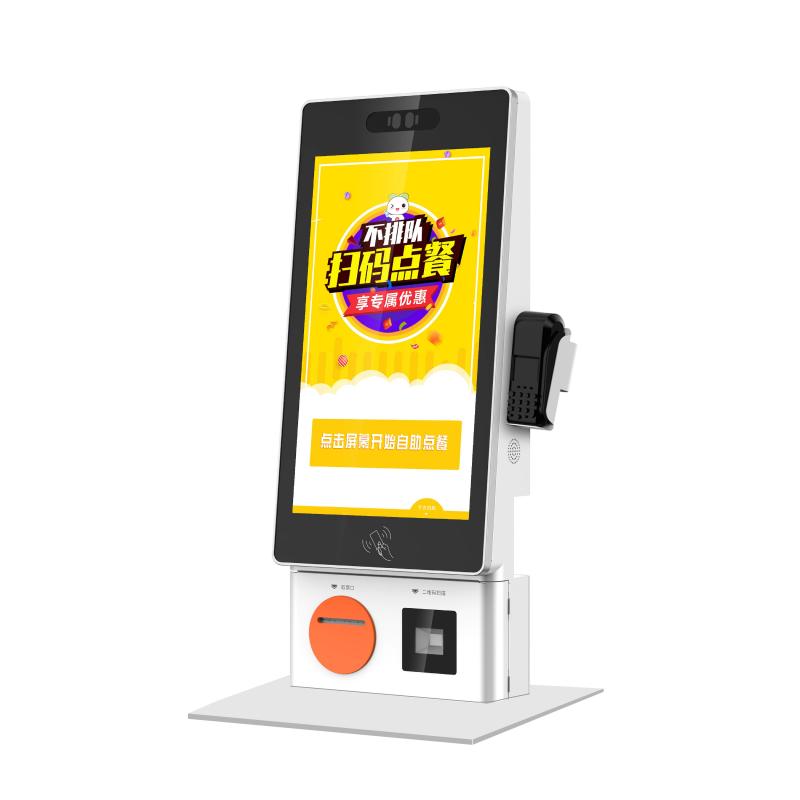
POS System Compatibility: Seamless integration with existing Point of Sale (POS) systems for efficient order processing.
Menu Management: Ability to sync menu changes in real-time across kiosks and POS systems, ensuring consistency.
Inventory Tracking: Integration with inventory management software to automatically update stock levels based on orders.
Payment Gateway: Support for various payment processing services, allowing secure transactions through the kiosk.
Loyalty Programs: Integration with customer loyalty programs to reward frequent patrons and track engagement.
Marketing Tools: Ability to connect with digital signage and promotional platforms for upselling and marketing.
Third-Party Delivery Services: Integration with delivery platforms to streamline orders for takeout and delivery.

Site Assessment: Initial evaluation of the restaurant layout to determine optimal kiosk placement.
Power and Connectivity: Ensuring access to power outlets and reliable internet connectivity at installation sites.
Physical Setup: Assembling and positioning kiosks securely within the restaurant environment.
Software Installation: Loading the necessary software and configuring settings for the specific restaurant.
Customization: Implementing branding and user interface modifications as per the restaurant’s requirements.
Testing: Conducting thorough testing of all functionalities, including payment processing and order accuracy.
Staff Training: Providing training sessions for staff on operating and troubleshooting the kiosks.
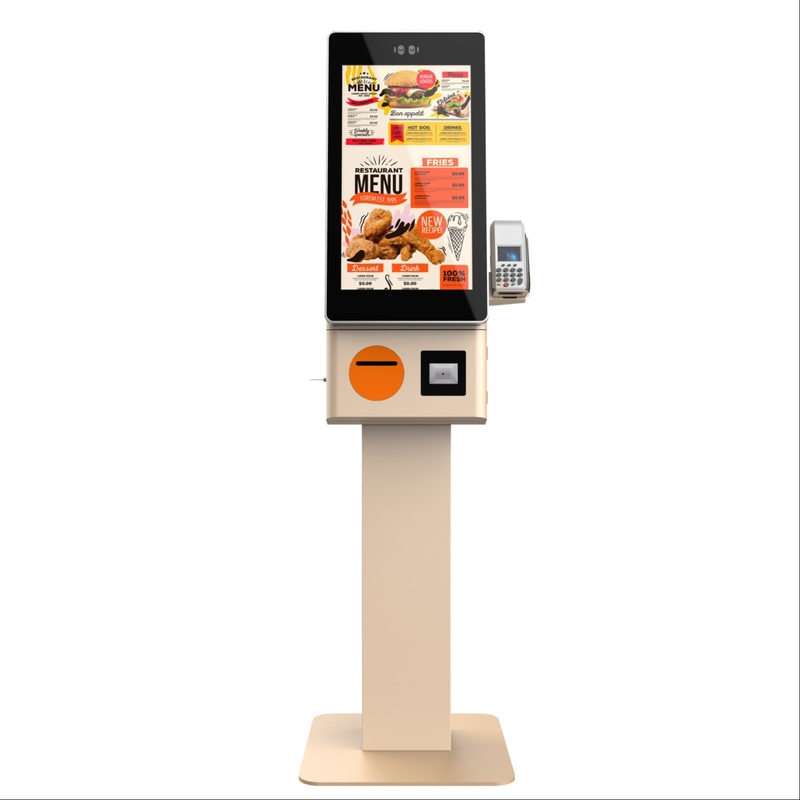
Regular Check-ups: Scheduled maintenance to ensure hardware and software are functioning optimally.
Software Updates: Regular updates to the operating system and applications to enhance performance and security.
Technical Troubleshooting: Providing quick support for any issues that arise, minimizing downtime.
Remote Monitoring: Utilizing software tools to monitor kiosk performance and resolve issues remotely.
Replacement Parts: Availability of spare parts for quick replacements in case of hardware malfunctions.
Customer Support: Dedicated support team available via phone, email, or chat to assist with any inquiries.
User Manuals and Resources: Providing comprehensive documentation and resources for staff to refer to when needed.
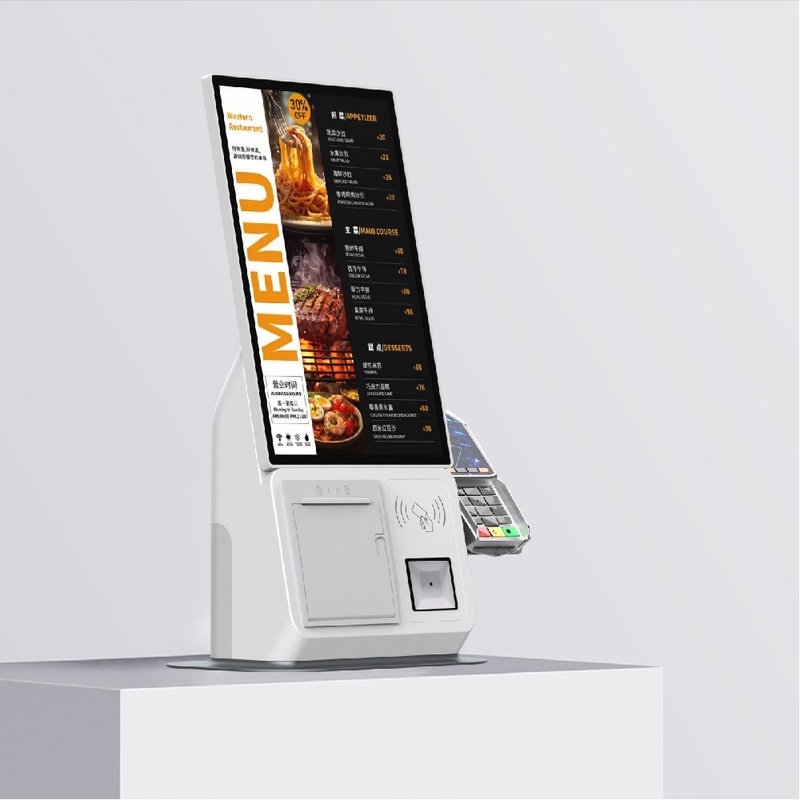
| Cost Factor | Description | Impact on Pricing | Price Range |
|---|---|---|---|
| Kiosk Hardware | Components like touch screens and printers | High upfront cost | $2,000 - $7,000 |
| Software Licensing | Fees for ongoing software support and updates | Recurring expenses | $500 - $2,000 per year |
| Installation | Costs related to setting up the kiosk | One-time setup cost | $300 - $1,500 |
| Maintenance | Regular upkeep and technical support | Annual maintenance cost | $100 - $500 per year |
| Customization | Modifications for branding and features | Increases overall cost | $500 - $3,000 |
| Training | Costs for training staff to operate kiosks | Additional expense | $200 - $1,000 |
| Shipping Costs | Fees for delivery and handling of kiosks | Adds to initial costs | $100 - $500 |
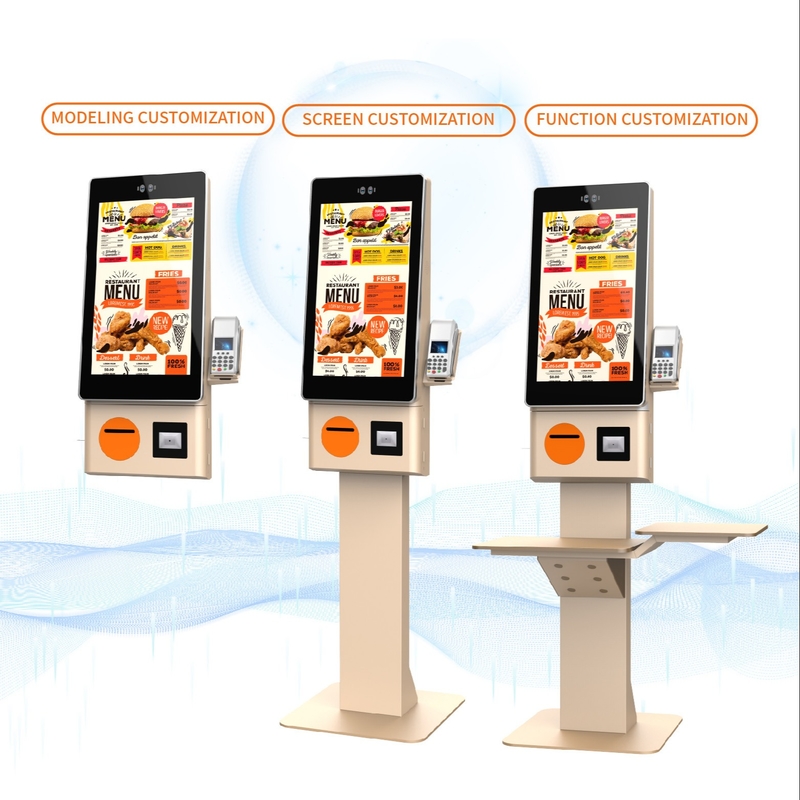
Compatibility: Ensure the kiosk integrates seamlessly with existing POS systems and software.
User Interface: Look for an intuitive interface that enhances customer experience and minimizes training needs.
Customization Options: Consider the extent of customization available for branding and menu configurations.
Payment Flexibility: Evaluate the payment options supported, including credit cards, mobile wallets, and loyalty programs.
Durability: Assess the build quality and materials used, especially for high-traffic environments.
Technical Support: Check the availability and quality of technical support, including response times and training resources.
Total Cost of Ownership: Analyze all costs involved, including hardware, software, maintenance, and potential upgrades over time.
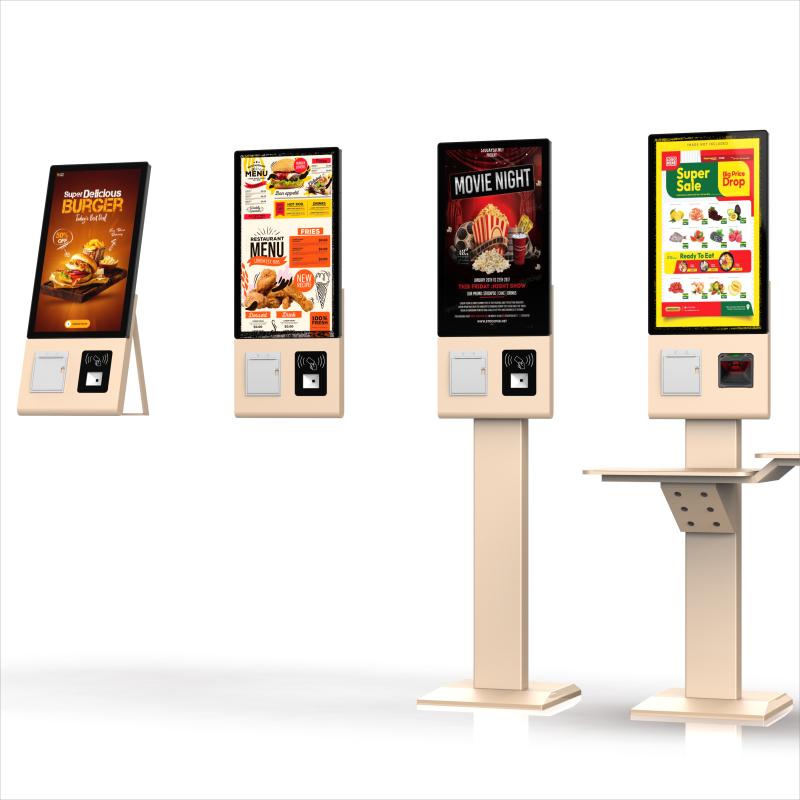
| Type | Size | Style | Design Features | Price Range |
|---|---|---|---|---|
| Standalone Kiosk | Medium to Large (15-32") | Modern, sleek | High-resolution touch screen, printer, secure casing | $2,500 - $7,000 |
| Wall-Mounted Kiosk | Compact (10-22") | Minimalistic | Space-saving design, integrated payment systems | $1,500 - $4,000 |
| Countertop Kiosk | Small to Medium (10-22") | Functional | Easy access for customers, ideal for small spaces | $1,000 - $3,000 |
| Outdoor Kiosk | Large (22-55") | Durable, weather-resistant | UV protection, rugged casing, high brightness display | $3,000 - $8,000 |
| Mobile Kiosk | Varies (Portable Size) | Flexible | Lightweight, easy to transport, battery-operated options | $2,000 - $5,000 |
| Touchless Kiosk | Medium to Large (15-32") | Tech-forward | Gesture control or QR code scanning capabilities | $3,000 - $7,500 |
| Custom Kiosk | Varies | Tailored | Designed to meet specific branding and functionality needs | $5,000 - $15,000 |
Assess Your Needs: Determine the specific requirements for your restaurant, including the desired features, size, and budget.
Research Options: Explore different types of self-ordering kiosks available in the market, focusing on features that meet your needs.
Compare Vendors: Evaluate multiple kiosk manufacturers or suppliers, checking their reputation, reviews, and product offerings.
Request Quotes: Contact selected vendors for detailed pricing, including hardware, software, installation, and maintenance costs.
Review Customization Options: Discuss available customization features to align the kiosk with your restaurant’s branding and user interface preferences.
Check Compatibility: Ensure the kiosk is compatible with your existing POS system and any other software you use.
Evaluate Support Services: Inquire about technical support, maintenance plans, and training for your staff to operate the kiosks effectively.
Finalize Purchase: Select a vendor, negotiate terms, and place your order, ensuring you understand the delivery timeline and warranty options.
What did our happy clients say?
I recently purchased a self ordering kiosk for my restaurant, and I couldn’t be happier! The quality is outstanding, and it seamlessly integrates with our POS system. The manufacturer's support team was incredibly helpful during installation and training. Highly recommend!
Our new self ordering kiosk for restanrants has transformed the way we serve customers! The build quality is excellent, and it has significantly reduced wait times. The manufacturer provided exceptional service, guiding us through every step. A fantastic investment for any restaurant!
I’m thrilled with the self ordering kiosk for restaurant we purchased! Its sleek design and user-friendly interface have impressed our customers. The manufacturer's customer service was top-notch, ensuring a smooth setup process. This kiosk has truly elevated our dining experience!
The self ordering kiosk for restaurants we got is a game-changer! It’s robust, easy to use, and looks great in our restaurant. The support from the manufacturer was phenomenal—they were available for all our questions and made sure everything was perfect. Five stars!
I love our new self ordering kiosk for restaurants! The quality is superb, and it’s made a significant difference in our efficiency. The manufacturer’s service exceeded our expectations, from installation to ongoing support. This was a wise choice for our business!
Our self ordering kiosk for restaurants has exceeded all expectations! The quality is impressive, and it fits perfectly with our restaurant theme. The manufacturer was very responsive, ensuring we had everything we needed. It’s been a fantastic addition to our service!
I’m very satisfied with the self ordering kiosk for restaurants we purchased. It operates flawlessly and looks amazing. The manufacturer’s service was outstanding—they provided comprehensive training and were always ready to help. I highly recommend this kiosk to others!
The self ordering kiosk for restaurants we bought is incredibly well-made and user-friendly. It has greatly improved our customer flow. The manufacturer offered excellent support throughout the process, ensuring we felt confident using it. A truly worthwhile investment for our restaurant!